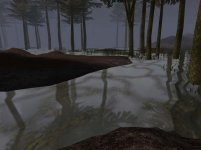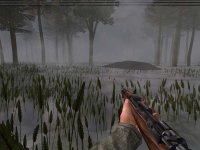Oh - no - please do the willow - 2-3 low-ish poly models would be good.
Reason for problems in original; version of map:
FPS on my kit with two 512 x 512 fluid surfaces - 40
FPS on my kit with no fluidsurfaces at all - 150
So I need big, low res FS's - with one of 128 x 64 fps is 130.
Damn, no clever wading effects
Reason for problems in original; version of map:
FPS on my kit with two 512 x 512 fluid surfaces - 40
FPS on my kit with no fluidsurfaces at all - 150
So I need big, low res FS's - with one of 128 x 64 fps is 130.
Damn, no clever wading effects
Last edited:
Upvote
0



